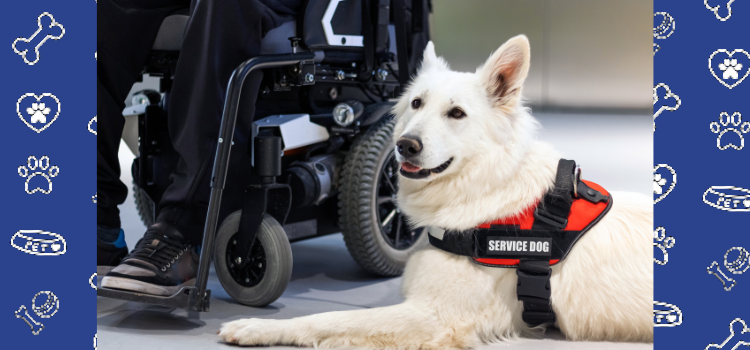Breaking Myths: Common Misconc...

Breaking Myths: Common Misconceptions About Emotional Support Animals and Service Dogs
Emotional Support Animals (ESAs) and Service Dogs play crucial roles in the lives of many individuals, offering vital support and companionship. However, despite their importance, there are numerous misconceptions surrounding these animals. In this article, we aim to dispel these myths and provide accurate information to foster better understanding and appreciation for the roles these animals play in the lives of their owners.
Myth #1: Emotional Support Animals are just pets in disguise.
One of the most prevalent misconceptions is that ESAs are simply pets with no real purpose other than providing comfort to their owners. In reality, ESAs serve a vital role in providing emotional support to individuals suffering from mental health conditions such as anxiety, depression, or PTSD. These animals are prescribed by licensed mental health professionals as part of a therapeutic treatment plan.
Myth #2: Service Dogs are only for people with physical disabilities.
While it's true that Service Dogs are often associated with assisting individuals with physical disabilities such as visual impairments or mobility issues, they also play a crucial role in supporting individuals with various other disabilities. This includes conditions such as autism, diabetes, epilepsy, and psychiatric disabilities. Service Dogs undergo extensive training to perform specific tasks that mitigate their owner's disability, enabling them to lead more independent lives.
Myth #3: Anyone can get an ESA or Service Dog without a legitimate need.
Another common misconception is that obtaining an ESA or Service Dog is as simple as getting any other pet. In reality, both ESAs and Service Dogs require proper documentation. For ESAs, individuals must obtain a recommendation letter from a licensed mental health professional, stating that the animal provides therapeutic benefits for their mental health condition. Similarly, Service Dogs undergo rigorous training from accredited organizations before being matched with individuals in need.
Myth #4: ESAs and Service Dogs are exempt from rules and regulations.
While ESAs and Service Dogs are granted certain privileges under the law, such as housing and air travel accommodations, they are still expected to adhere to basic behavioral standards. Both ESAs and Service Dogs should be well-behaved in public settings and under control of their owners at all times. Additionally, ESAs and Service Dogs are not exempt from local leash laws and other regulations pertaining to animal behavior.
Myth #5: All animals can be trained to be ESAs or Service Dogs.
Training an animal to be an ESA or Service Dog requires specialized skills and expertise. Not all animals possess the temperament or aptitude for such roles. Service Dogs, in particular, undergo extensive training to perform specific tasks that assist their owners with disabilities. Additionally, ESAs must exhibit calm and non-disruptive behavior in various environments to provide effective emotional support.
Emotional Support Animals and Service Dogs play invaluable roles in the lives of individuals with disabilities and mental health conditions. However, misconceptions surrounding these animals persist, often leading to misunderstandings and stigma. By dispelling these myths and providing accurate information, we can foster greater understanding and appreciation for the important work that ESAs and Service Dogs do, ultimately creating a more inclusive and compassionate society.